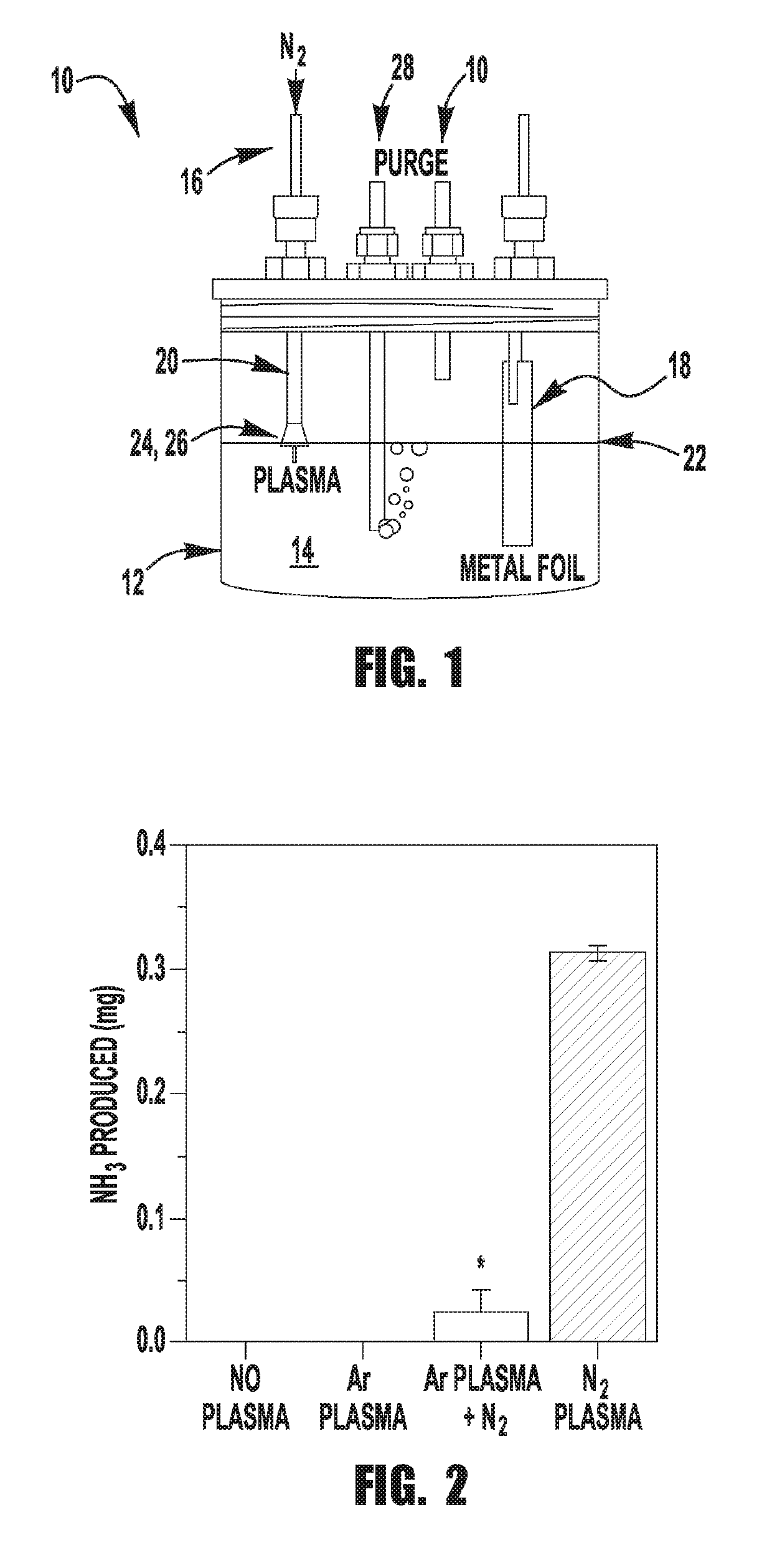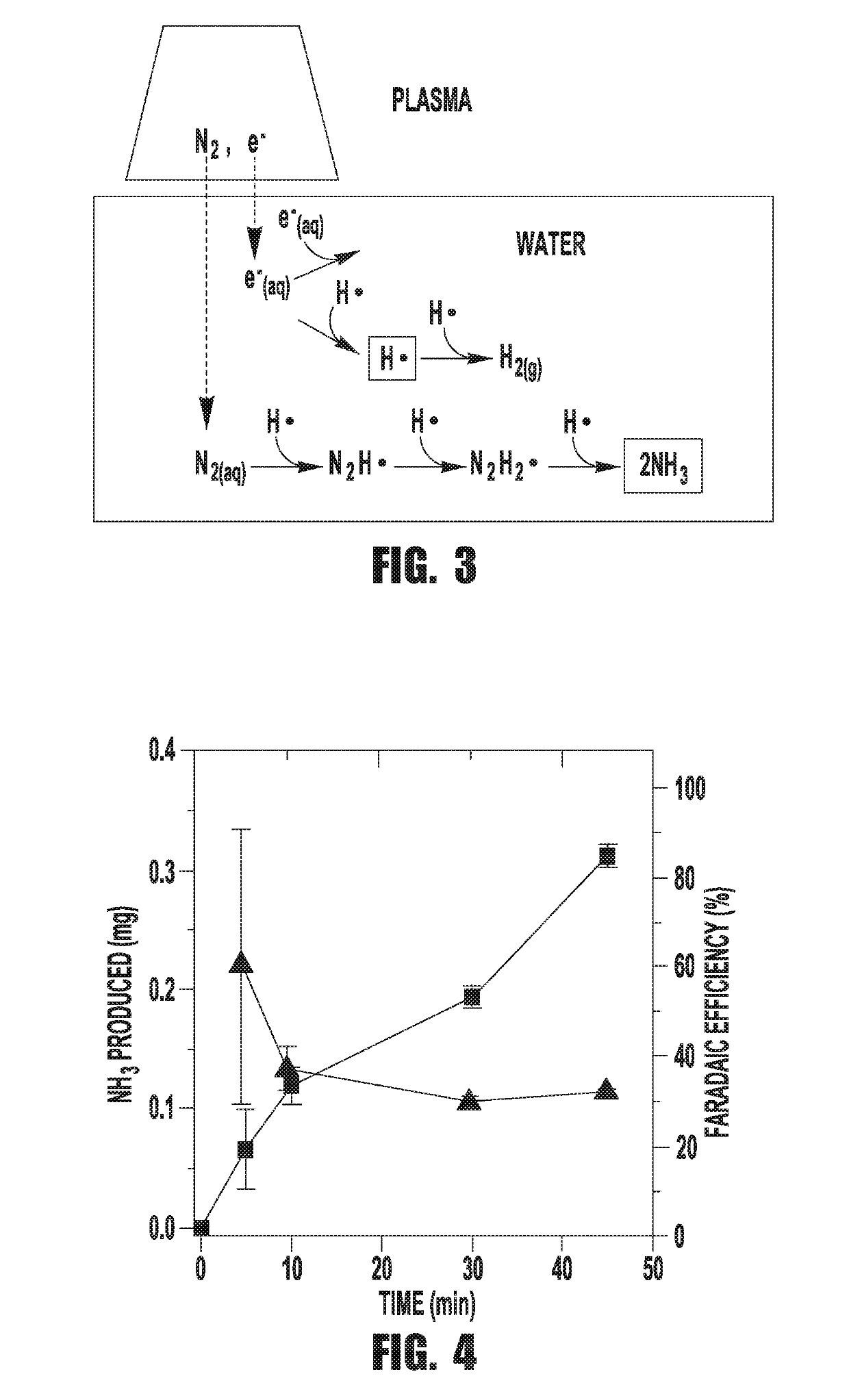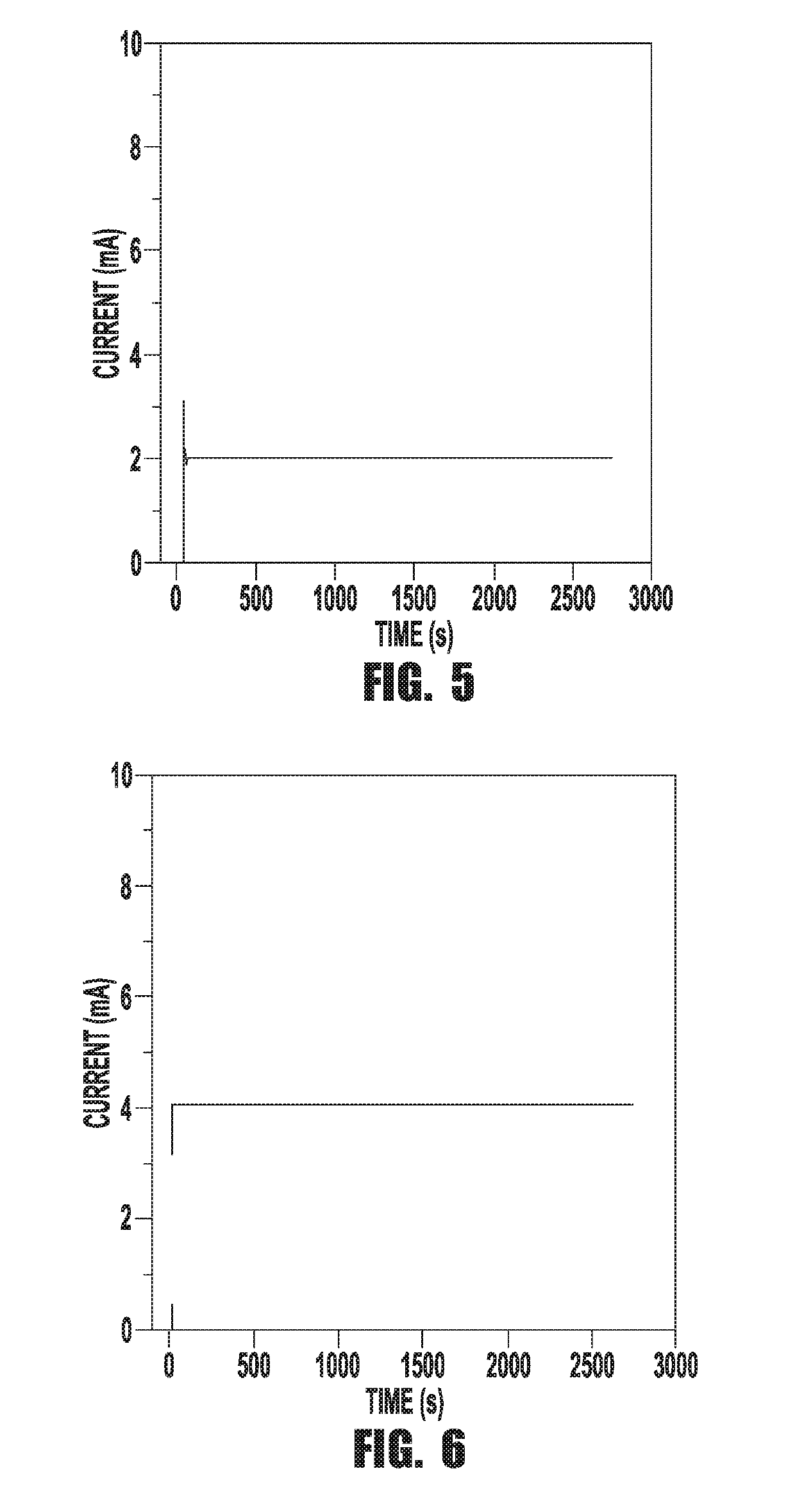Ammonia synthesis using plasma-produced electrons
a plasma-produced electron and ammonia technology, applied in bulk chemical production, electrolysis components, electrolysis coatings, etc., can solve the problems of high energy consumption, more greenhouse gas emissions, and difficult integration with renewable sources of hsub>2 /sub>such as electrolysis, and achieve high faradaic efficiency and high production rates.
- Summary
- Abstract
- Description
- Claims
- Application Information
AI Technical Summary
Benefits of technology
Problems solved by technology
Method used
Image
Examples
example 1
ynthesis Using Plasma Electrochemical Cell
Plasma Electrochemical Cell Setup
[0073]The custom designed electrochemical cell contains a stainless steel capillary tube (Restek inc, 1 / 16″ O.D., 0.02″ I. D. and 10 cm long) that is connected to a negative high voltage power supply (Gamma High Voltage, RR15-10R) through a variable ballast resistor (0.25-1 MΩ) in series as the cathode. A Pt foil (Alfa Aesar, 99.9% purity, 0.001″ thick) was wired through a 500Ω resistor to ground to form the anode. The electrodes, along with two purging tubes were fed into the reactor cell through a custom polytetrafluoroethylene (PTFE) lid that ensured that the reactor cell is isolated from ambient gasses. One of the purging tubes was used for bubbling nitrogen through the solution and the other served as exhaust. The capillary tube was set at a high voltage and then lowered into the cell through the lid until the microplasma ignited close to the solution surface. All experiments were performed at a constant...
PUM
 Login to View More
Login to View More Abstract
Description
Claims
Application Information
 Login to View More
Login to View More - R&D
- Intellectual Property
- Life Sciences
- Materials
- Tech Scout
- Unparalleled Data Quality
- Higher Quality Content
- 60% Fewer Hallucinations
Browse by: Latest US Patents, China's latest patents, Technical Efficacy Thesaurus, Application Domain, Technology Topic, Popular Technical Reports.
© 2025 PatSnap. All rights reserved.Legal|Privacy policy|Modern Slavery Act Transparency Statement|Sitemap|About US| Contact US: help@patsnap.com



